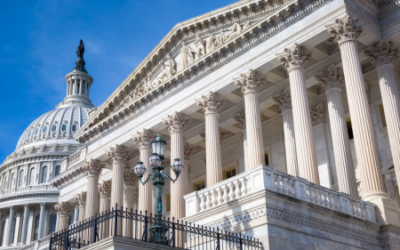Who would have thought that counties invest more than $122 billion each year to build infrastructure and maintain and operate public works? Very few! That statistic however, comes straight from the National Association of Counties (NAC) so the numbers are real. The data validates the fact that county government is “big business” in America.
Here’s why – counties own nearly 40 percent of the nation’s bridges and county officials build and maintain 46 percent of all public roads. Additionally, counties are involved in one-third of the nation’s airports and 78 percent of the nation’s public transportation systems. Adequate funding is critically important to these governmental officials.
But, adequate funding has not been available for a very long time and counties are struggling. Like every other governmental jurisdiction, county officials have counted on the President’s long-promised $1.5 trillion magic elixir infrastructure plan to provide some relief. Best to forget that! The only magic in his plan thus far is that it disappears periodically, only to reappear spasmodically during never-ending versions of “Infrastructure Week.”
The Trump plan is based on a federal funding investment of $200 billion over 10 years. Think of that as $20 billion a year and then ask how Congress might allocate that kind of funding without a prolonged fight. The administration’s message has been that this seed money will leverage $1.3 trillion in additional funding from other sources. But, as every taxpayer knows, the President’s plan will be greatly modified if it ever gets congressional approval.

Congress, however, has many senators and House members from rural areas of America. That has resulted in some additional much-needed funding.
Approximately $560 million has been appropriated for the U.S. Department of Agriculture’s Rural Utilities Service Water and Waste Disposal Program, as well as an additional $500 million for direct rural water and waste disposal loans and grants. These funds, in the form of long-term, low-interest loans to rural areas with populations of 10,000 or less, can be used for drinking water, disposal systems and storm water drainage projects.
Rural communities can also take advantage of an additional $300 million that can be found in the Drinking Water and Clean Water State Revolving Fund. This program also distributes funds in the form of grants for low-interest loans.
The Water Infrastructure Finance and Innovation Act, a federal program that has funding for water and wastewater infrastructure projects, had its loan funds more than doubled, up from $30 million to $63 million. Sounds good until one considers the guidelines.
For small communities with populations of 25,000 or less, federal assistance cannot exceed 80 percent of project costs and there must be a dedicated source of revenue for repayment. Even for a project estimated to cost $5 million, at least $1 million is required from another investment source. Finding that kind of additional funding is no easy task.
The needs of counties are high priorities in many states, especially when it comes to water resources, broadband and transportation. But, many other types of critical infrastructure – power grids, public facilities, renewable energy, university housing and school buildings – have been overlooked entirely too long because funding is simply not available. The neglect will soon have a negative economic impact and the region, state and ultimately the entire country will suffer.
It’s time for Congress to do something – either positive or negative – so state and local leaders will know what to expect and how to plan. Nothing good will result if local government leaders wait for something that is destined not to happen. Counties are critical jurisdictions of government and the needs of rural America must not be ignored.
Strategic Partnerships, Inc. is one of the leading procurement consulting companies in the U.S. Contact them today to learn how to increase your public sector sales.







